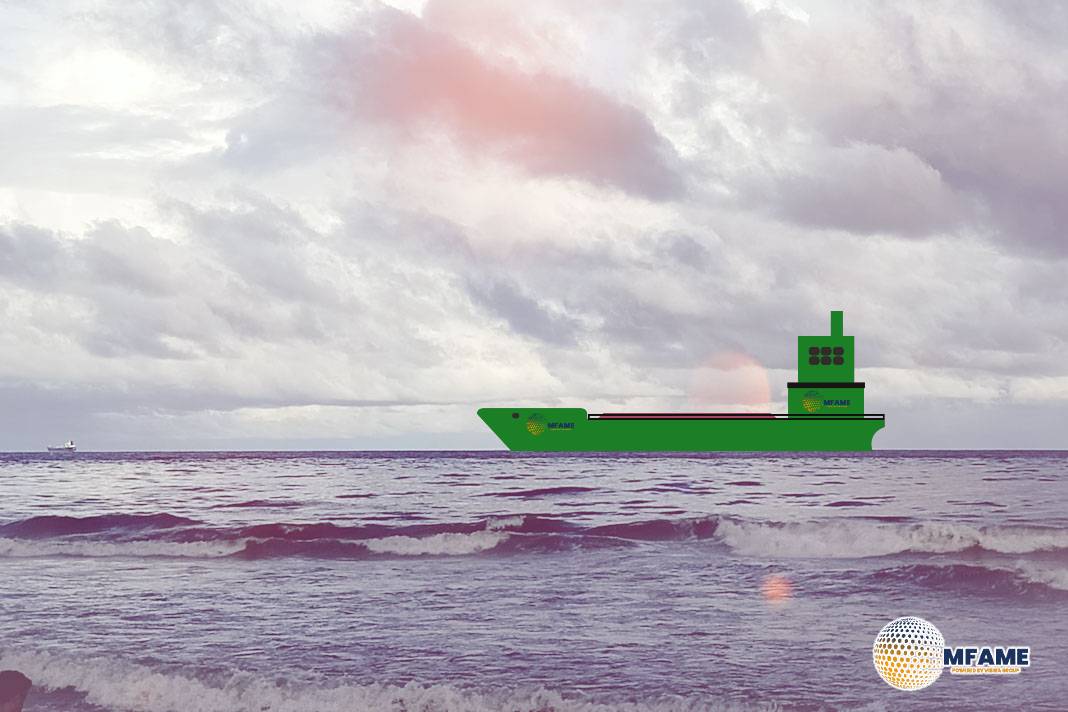This week’s Chart Monitor indicates a robust and sustained upward trend in Brazilian iron ore shipments, which is having a significant impact on dry bulk freight markets.
Brazilian Iron Ore Shipments on the Rise
Brazilian iron ore shipment volumes have consistently surpassed previous years’ levels since the end of Q1 2025. Q1 2025 closed with approximately 70 million tons shipped, followed by over 80 million tons in Q2. These figures represent a notable recovery compared to the lows of 2021, which saw around 50 million tons in Q1 and 67 million tons in Q2.
Further solidifying this bullish outlook is Vale’s Q2 production report, which announced an impressive 83.6 million metric tons of iron ore output, a 3.7% year-on-year increase. This growth is primarily attributed to a new second-quarter production record at the S11D mine in northern Brazil, Vale’s largest operation, and a strong performance at the Brucutu mine in the southeast. With production and iron ore flows increasing, a continued upward pressure on the C3 route (Brazil-China) is anticipated in the coming weeks. This is driven by a convergence of tightening vessel supply and rising cargo volumes, which should lead to a firmer freight market.
Capesize Market: Firmness on Key Routes
Capesize rates on the C3 (Brazil-China) and C5 (Australia-China) routes have shown signs of firmness, with rates surpassing $20/ton for Brazil–China and $10/ton for Australia–China.
Analysis of ballaster numbers versus Baltic rates reveals differing drivers for this firmness:
- The recovery on the C5 route appears to be primarily due to a decline in available ballasters in the Pacific.
- In contrast, the recent strength on the C3 route seems more sentiment-driven for now, as there hasn’t been a notable drop in the number of vessels ballasting towards the South Atlantic. This sentiment is likely fueled by the positive news from Vale’s production update, raising forward expectations for increased iron ore cargo flows.
Capesize Ballasters View: Ballast availability in the Atlantic remained tight. Conversely, the Pacific continued to exhibit elevated ballast vessel counts, particularly in Australasia. Ballaster activity in the Indian Ocean and South Africa began to ease, showing a 6% week-on-week decline.
Panamax Market: Softening After Peak
Panamax spot rates from East Coast South America (ECSA) to the Far East, after reaching a peak in mid-July, have started to gradually soften. Despite this softening, current levels remain significantly higher than the lows recorded at the beginning of June, with ECSA–Far East rates still approximately 9% higher than a month ago. This can be partly attributed to forward optimism linked to the U.S. summer crop season. Additionally, Panamax vessel supply to ECSA has shown a continuous downward trend since March, while daily loaded volumes have remained consistently noticeable throughout the year.
Panamax Ballasters View: An oversupply of Panamax ballasters emerged in the Atlantic. Conversely, ballast numbers in the Indian Ocean/South Africa and Australasia declined by 6% and 10% week-on-week, respectively.
Supramax and Handysize Markets: Declines and Oversupply
Supramax spot rates from the U.S. Gulf to the Far East declined to $40/tonne this week, an 8% drop from the previous week. A similar softening was observed on the ECSA–Far East route, where rates fell to $37/tonne, although still approximately 20% higher than a month ago. The recent bullish sentiment in this segment appeared to stem from a tightening supply, with the number of available vessels falling below 90. Meanwhile, daily loading volumes from the USG/USEC have recently eased, dropping to under 0.3 million tonnes.
Supramax Ballasters View: Oversupply appeared in both the Atlantic and Pacific basins. In the Atlantic, ballast supply increased significantly by 20% in the North and 10% in the South. In the Pacific market, there was a significant increase, with the Indian Ocean/South Africa rising 25% and Australasia increasing 20% week-over-week.
Handysize Ballasters View: Vessel oversupply has seen continuous and significant increases in both the Pacific and North Atlantic basins. Ballasters in the North Atlantic increased by 24%, and in the Far East/NOPAC region by 17%.
Did you subscribe to our daily Newsletter?
It’s Free Click here to Subscribe!
Source: Breakwave Advisors
















